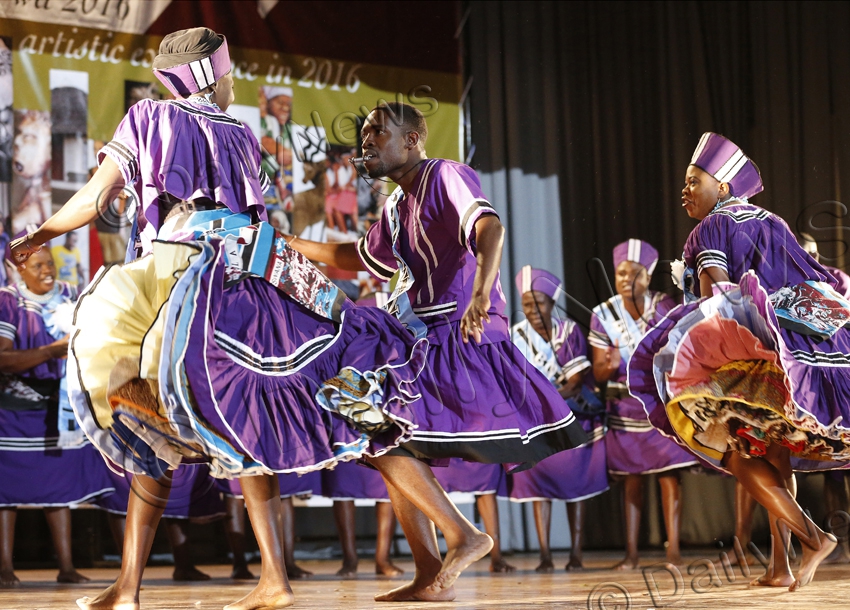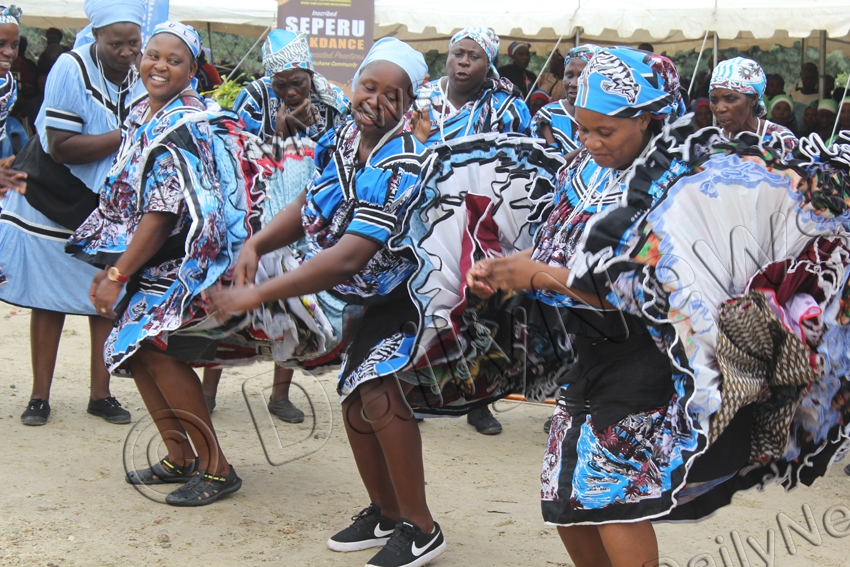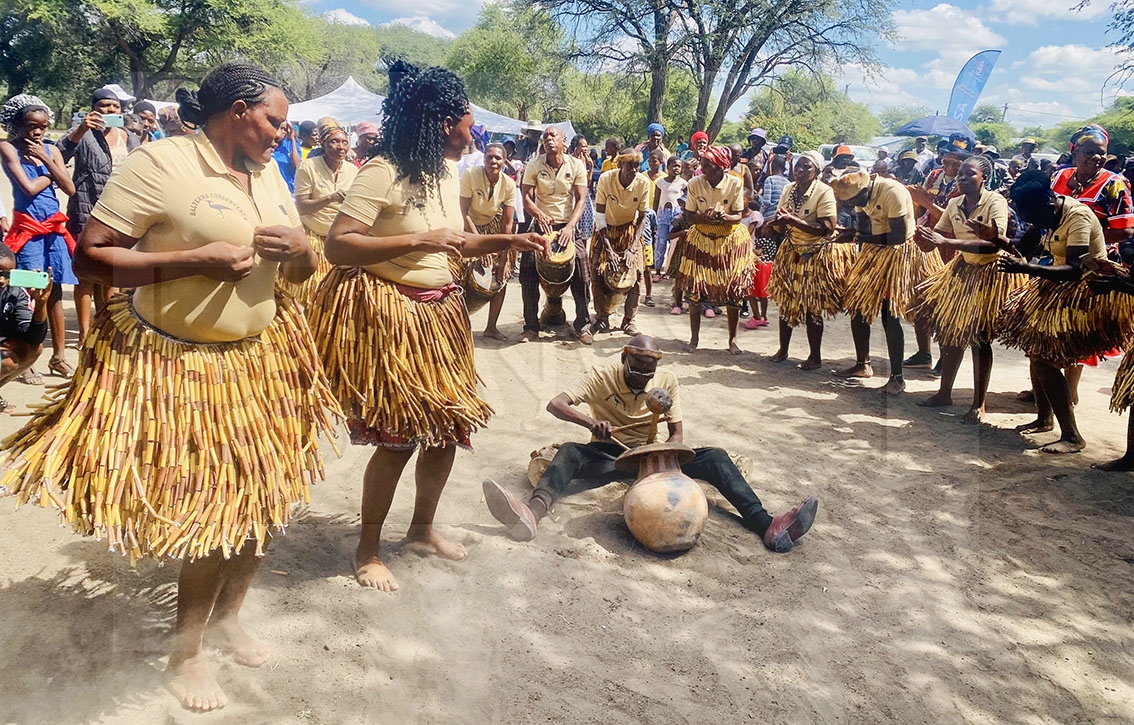Banika sheds light on Seperu dress
12 Mar 2020
Modernity has done little to change the Veehukane (Basubiya) women in the Chobe District who have held on to their cultural values.
They have stuck to a piece of their 19th century history through their Seperu dress commonly known as ‘Mushishi.’
The dress is worn during ceremonies that mark important milestones in the lives of Veehukane.
According to those knowledgable in the Veehukane or Basubiya history, during such ceremonies, that include weddings and other traditional and social gatherings, male dancers lead a succession of skilled women dancers wearing layered dresses that take the shape of a peacock’s tail.
A group of vocalists encircles the dancers, singing and clapping throughout the performance. The dance is transmitted orally and through observation.
In the dance, the women would form a horseshoe while male dancers face the women at the end of the horseshoe. The lead dancer uses a flywhisk to direct and choose the female dancer, while other members of the group imitate the sounds of a male dove.
The selected female dancer then shows off her dancing skills by reflecting the image of a peacock tail with her multi-layered dress.
The Seperu dress is lined with colourful, vibrant patterns and several petticoats. This creates a wide structured skirt, paying homage to their identity through this traditional fashion staple.
The women will then swing the convoluted skirts to show off colourful layers of folds sown inside while mimicking a peacock dancing.
The dress, it is said, is a permanent reminder of the identity of the Veehukane tribe or Basubiya and the cultural dress is more than something that meets the eye.
Kgosi Rebecca Banika of Pandamatenga explained the significance of the dress, saying it played a vital role in the lives of the Veekuhane ethnic group.
“It provides a sense of cultural identity in general, in the historical context and in the context of modern-day Botswana,” she said.
She said in the historical sense, it was designed to protect the body of women from being seen by other men not married to them, whilst in the modern context, it was used in cultural activities.
Kgosi Banika explained that the dress was made of many skirts to protect the body of the woman. “It is made of many patterns to prevent the woman’s body from being seen by other men other than the who is married to the woman,” she added.
She said while dancing, if the dress was somehow picked up to expose the body, the man would quickly use his flywhisk to put it back to its normal position.
Kgosi Banika further stated that although the Seperu dress was a key symbol of identity and pride for the Veehukane, its knowledge bearers and active practitioners had diminished in number, affecting its visibility and transmission to the younger generation.
She explained that currently, there were only a few active practitioners and master practitioners, all of whom were over 70 years old.
Kgosi Banika said even the Seperu dance has been modernised as evidenced by the swinging of the dress which exposed the hidden parts of a woman.
“Traditional methods of transmission have been undermined by the distortion of the significance of the ‘mushishi’ dress,” she added.
These, she said, included modern wedding ceremonies, current curricula in schools which has led community members to ignore or forget their own identity.
She said as for the Chobe District, which is renowned for its rich tourism that promotes the region’s flora and fauna, the inclusion of cultural tourism through Seperu cultural performances would help brand the district and elevate the profile of the country in the long-term.
Kgosi Banika said Chobe District was well known for its diverse wildlife which attracted tourists and urged the community to use their culture to diversify the tourism package by developing cultural tourism activities and projects.
In order to keep it a part of their fashion, an upsurge of young Basubiya designers, models and activists are working to keep their heritage alive.
One of them is Margaret Mwezi of Mabele who explained that the long dress was custom-made to match the wearers own personal style and flair.
She said she started to design the dress since 1975 in order to keep it a part of their fashion.
Mwezi explained that although the dress was expensive at P500 each, the young and old were not hesitant to buy it, adding that primary schools in the Chobe region had also started to make orders from her. She said it was pleasing that the Seperu folkdance music was being practiced in primary schools, adding that it was a welcome development to preserve the dress.
As for a young Musubiya girl, Lebogang Mazira, the dress is not something that can be easily thrown away because it defines what they are as a tribe.
“Being a Musubiya means everything to me, it is my heritage, my character and my values,” she said, adding that a lot of Basubiya young girls were moving away from their culture.
Mazira said her first experience wearing the dress was amazing because she felt there was nothing that was missing in her being.
The dress is used during the Seperu folk dance and associated practices and is the country’s latest intangible cultural element to be inscribed for urgent safeguarding by UNESCO. ENDS
Source : BOPA
Author : Thamani Shabani
Location : KASANE
Event : INTERVIEW
Date : 12 Mar 2020








